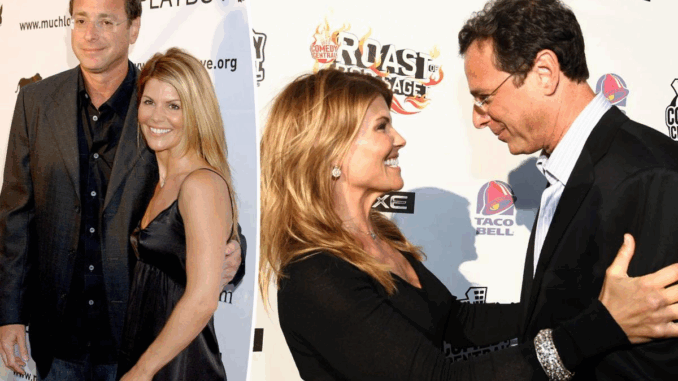
A Timeless Comfort in a Modern World
In 2025, we live in a world of streaming wars, AI-generated content, and viral 15-second clips. Yet somehow, Full House — a sitcom from 1987 — still pops up in trending searches, nostalgic playlists, and cozy-night rewatch lists. Why? Because some shows don’t just entertain; they heal.
The Enduring Power of Kindness
At a time when cynicism dominates pop culture, Full House reminds us of the power of kindness. The show’s values — compassion, patience, and unconditional love — haven’t aged a day. In fact, they feel more relevant now than ever in an era craving sincerity.
A Simpler Message for Complicated Times
The digital world moves fast. Every headline competes for attention, every trend fades in seconds. Full House, on the other hand, slows everything down. It invites us to breathe, laugh, and remember what really matters: family, forgiveness, and second chances.
Streaming Keeps the Tanners Alive
Thanks to platforms like Netflix, Hulu, and Amazon Prime, Full House is never more than a click away. A whole new generation — many of whom weren’t even born when the show ended — is discovering the Tanners for the first time.
It’s not just nostalgia; it’s continuity. Streaming has turned Full House into a timeless comfort show, connecting generations through shared laughter.
Lessons That Outlasted the 90s
Every episode carried a moral. Whether it was about honesty, friendship, or the importance of saying “I’m sorry,” Full House made these lessons relatable without ever feeling preachy. In a world where social media often rewards outrage, those lessons feel revolutionary.
Why Gen Z Loves Full House
Surprisingly, Full House has a growing fan base among Gen Z viewers. For many, it’s a form of “emotional self-care.” Watching D.J. navigate teenage heartbreak or Uncle Jesse sing lullabies offers relief from the chaos of modern media. It’s not ironic nostalgia — it’s genuine appreciation.
Family on and Off the Screen
One of the reasons Full House still resonates is because the cast truly became a family. Their real-life connection shines through in every episode, and decades later, fans still feel it. That authenticity sets it apart from the manufactured chemistry often seen in modern sitcoms.
From Full House to Fuller House: The Legacy Continues
The success of Fuller House proved that nostalgia isn’t just about looking back — it’s about rediscovering what we loved and seeing how it evolves. D.J., Stephanie, and Kimmy stepping into parenthood mirrored the audience’s own journey into adulthood.
It wasn’t just a reboot. It was a reminder: we all grow, but the heart of family never changes.
Bob Saget’s Lasting Influence
Bob Saget’s portrayal of Danny Tanner left an emotional legacy that continues to shape TV dads today. His balance of humor, empathy, and vulnerability helped redefine masculinity on television. Even years after his passing, his presence is felt in every rerun and tribute.
The Tanners in the Age of TikTok
Believe it or not, Full House is thriving on TikTok. Clips of iconic scenes — Michelle’s sass, Joey’s jokes, Jesse’s hair — get millions of views. Younger fans remix them with modern soundtracks, turning nostalgia into a creative trend. The Tanner family has officially gone viral — again.
The Show That Bridged Generations
Few sitcoms have united parents and kids the way Full House did. Its humor worked for all ages, and its lessons were universal. Parents who grew up watching it now introduce it to their children — creating a rare shared pop-culture bond that spans decades.
What Modern TV Can Learn From Full House
In the streaming era, shows chase complexity — darker themes, shock twists, and cliffhangers. But Full House proves that simplicity can still be powerful. It built loyalty not with spectacle, but with sincerity. It trusted audiences to care about feelings more than flash.
The Secret Ingredient: Hope
Every Full House episode ended with hope — that tomorrow could be better, that family could heal, that love could conquer chaos. In a world that often feels fragmented, that kind of optimism isn’t just nostalgic; it’s essential.
How Full House Shaped Modern Sitcom DNA
You can see its fingerprints everywhere — from Modern Family to The Good Place. The “heartfelt sitcom” formula owes much to the Tanners’ legacy. Every show that makes you laugh and tear up in the same scene has a bit of Full House in its DNA.
Why It Still Feels Like Home
Full House isn’t about plot twists or trends. It’s about warmth — that cozy, familiar feeling of coming home after a long day. It doesn’t demand attention; it offers comfort. And that’s why, even in 2025, audiences still hit play when they need to feel safe.
Conclusion: The Heart Will Always Find Its Way Home
In a world that’s louder, faster, and more digital than ever, Full House reminds us that the simplest stories often leave the deepest marks. It’s not just a sitcom — it’s a promise that family, in all its imperfect beauty, will always matter.
FAQs
1. Why is Full House still popular today?
Because its universal themes of love, family, and forgiveness remain timeless and comforting across generations.
2. How has streaming helped Full House reach new audiences?
Platforms like Netflix and Hulu have made it accessible to new viewers worldwide, keeping it culturally alive.
3. Why do Gen Z viewers connect with the show?
They appreciate its warmth and sincerity — a refreshing contrast to the fast-paced chaos of modern media.
4. What is Full House’s biggest lesson?
That no family is perfect, but love, patience, and humor can hold everything together.
5. Is another Full House project possible in the future?
While nothing official has been announced, the show’s enduring popularity means the door is always open.
